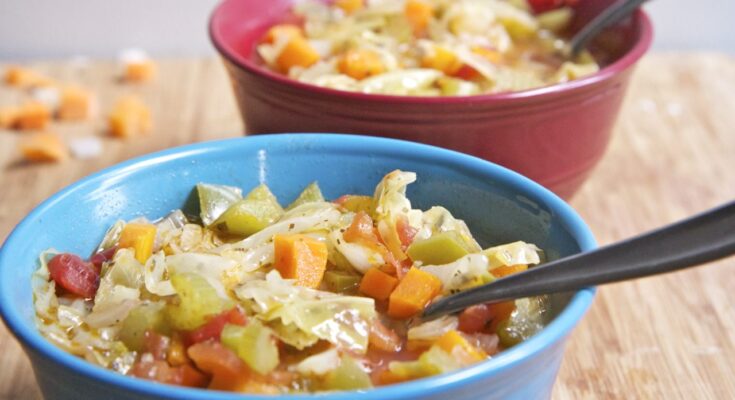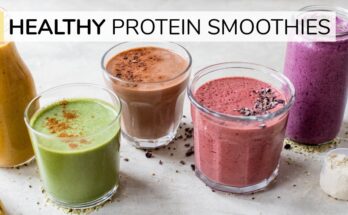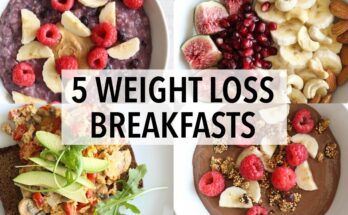Cabbage Soup Recipe for Weight Loss: When it comes to quick and easy weight-loss hacks, the cabbage soup diet has stood the test of time. For decades, people have turned to this low-calorie, nutrient-rich soup as a way to shed pounds quickly while still feeling full. The cabbage soup diet isn’t about starving yourself—it’s about flooding your body with fiber, vitamins, and water-rich vegetables that help keep cravings in check. If you’ve ever struggled with portion control or late-night snacking, this soup can be your new go-to trick.
What makes cabbage soup so appealing is its simplicity. It doesn’t require fancy ingredients, expensive supplements, or hours in the kitchen. Instead, you get a wholesome, hearty soup that can be made in under an hour and enjoyed throughout the week. Many weight-loss programs can feel restrictive, but cabbage soup is flexible—you can tweak it to your taste while still keeping it healthy and effective. Think of it as a reset button for your body: it helps reduce bloating, improves digestion, and keeps you on track toward your health goals.
Of course, like any weight-loss strategy, cabbage soup isn’t magic on its own. It works best when combined with a balanced diet and regular exercise. But if you’re looking for a low-cost, high-volume food that lets you eat plenty without overdoing calories, cabbage soup is one of the best choices out there.
Benefits of Cabbage Soup for Weight Loss
Cabbage soup comes with a long list of benefits that make it a favorite among those trying to slim down. The first major perk is calorie control. Since the soup is mainly made from vegetables and water, it’s naturally low in calories while still being filling. This allows you to eat generous portions without worrying about overconsuming. In fact, one bowl of cabbage soup is often less than 100 calories, which means you can satisfy your hunger while still creating a calorie deficit.
Another huge benefit is its fiber content. Cabbage and other vegetables like carrots, celery, and onions provide plenty of dietary fiber, which helps regulate digestion and keeps you full longer. Fiber slows down digestion, which means you won’t feel the urge to snack as often. This is one of the key reasons why people notice quick results with the cabbage soup diet.
Nutritionally, cabbage is a powerhouse. It’s rich in vitamin C, vitamin K, folate, and antioxidants that support overall health. Adding in other vegetables boosts the vitamin and mineral profile even more. And let’s not forget hydration—because the soup is water-based, it helps keep your body hydrated, which is crucial for metabolism and fat burning.
Lastly, cabbage soup is excellent for detoxing. It flushes out excess sodium, reduces bloating, and supports liver function. Many people report feeling lighter, less sluggish, and more energetic after just a few days of incorporating it into their meals.
Ingredients You’ll Need for Cabbage Soup
Making cabbage soup is surprisingly easy, and the beauty is that you don’t need anything fancy. Most of the ingredients are likely already sitting in your kitchen. To make a traditional cabbage soup for weight loss, you’ll need the following:
Fresh Vegetables:
- 1 medium head of cabbage (chopped)
- 2 carrots (sliced)
- 2 celery stalks (chopped)
- 1 bell pepper (any color)
- 1 large onion (diced)
- 2–3 cloves garlic (minced)
- 2 tomatoes (diced or canned)
Liquids:
- 6–8 cups vegetable broth or water
Herbs and Seasonings:
- Salt and pepper (to taste)
- 1 tsp paprika
- 1 tsp dried oregano
- 1 bay leaf
- A pinch of chili flakes (optional for spice)
Optional Add-Ins for Extra Taste:
- Mushrooms for earthy flavor
- Zucchini for extra bulk
- Green beans for crunch
- A squeeze of lemon juice for freshness
The best part? You can adjust the ingredients based on what you have on hand. If you like it spicy, throw in some jalapeños. If you prefer a milder soup, stick with the basics. Cabbage soup is forgiving—you can’t really mess it up!
Step-by-Step Guide to Making Cabbage Soup
Making cabbage soup is straightforward, but a few simple tricks can elevate it from “just another vegetable soup” to a truly satisfying meal.
Step 1 – Preparing Your Vegetables
Start by washing all your vegetables thoroughly. Chop the cabbage into bite-sized chunks and slice the carrots and celery thinly so they cook evenly. Dice the onion and bell pepper, and don’t forget to mince the garlic for maximum flavor release.
Step 2 – Sautéing for Maximum Flavor
In a large soup pot, heat a little olive oil over medium heat. Add the onion, garlic, and bell pepper, and sauté until fragrant. This step is crucial—it builds a flavorful base that makes the soup taste rich and satisfying, even without heavy fats.
Step 3 – Adding Liquids and Simmering
Once your vegetables are softened, add the cabbage, carrots, celery, and tomatoes. Pour in the vegetable broth (or water, if you prefer). Stir everything together, then drop in your herbs and seasonings. Bring the mixture to a boil, then reduce to a simmer. Let it cook for about 25–30 minutes, or until all the vegetables are tender.
Step 4 – Adjusting Seasonings
Taste your soup and adjust the seasoning as needed. A squeeze of lemon juice can brighten the flavor, or a sprinkle of chili flakes can give it a kick. Don’t be afraid to experiment—this soup is versatile.
Step 5 – Serving and Storing
Serve hot, garnished with fresh parsley if you’d like. Store leftovers in the fridge for up to 5 days, or freeze portions for quick meals later. The flavors actually get better the next day as the vegetables absorb the seasonings.
Nutritional Breakdown of Cabbage Soup
One of the biggest reasons cabbage soup is a favorite for weight loss is its incredible nutritional profile with very few calories. On average, one serving (about 1 cup) contains:
- Calories: 70–90
- Carbs: 15–18g (mostly from vegetables)
- Protein: 2–3g
- Fat: Less than 1g
- Fiber: 3–5g
This means you can enjoy multiple bowls of cabbage soup without sabotaging your diet. Plus, it’s packed with vitamins A, C, and K, along with minerals like potassium, calcium, and magnesium. The high water content also helps flush out toxins and keeps you hydrated.
It’s the perfect balance—light enough for weight loss, yet nutritious enough to fuel your body throughout the day.
How to Use Cabbage Soup for Weight Loss
Cabbage soup is more than just a healthy recipe—it can be used strategically as part of a weight-loss plan. One of the most popular ways is through the 7-day cabbage soup diet. While it’s not meant to be a long-term solution, many people use it as a quick reset when they want to shed a few pounds, reduce bloating, or kick-start a healthier lifestyle.
The 7-day plan typically looks like this:
- Day 1: Unlimited cabbage soup and fruits (except bananas).
- Day 2: Cabbage soup and vegetables, especially leafy greens.
- Day 3: Cabbage soup, fruits, and vegetables (but no potatoes).
- Day 4: Cabbage soup, bananas, and skim milk.
- Day 5: Cabbage soup, tomatoes, and a small portion of lean protein (like chicken or fish).
- Day 6: Cabbage soup and lean protein with vegetables.
- Day 7: Cabbage soup, brown rice, and fresh vegetables.
This plan is effective for quick results because it relies on low-calorie, nutrient-dense foods. However, it’s important to remember that this is a short-term approach. For lasting weight loss, combine cabbage soup with balanced meals that include protein, healthy fats, and whole grains.
Another smart way to use cabbage soup is as a meal replacement for dinner or lunch a few times a week. Because it’s filling yet light, it helps cut down on unnecessary snacking in the evenings. Pairing it with a workout routine also enhances results since your calorie intake stays lower while your activity level increases.
Think of cabbage soup as a tool rather than a complete diet. Used wisely, it helps you manage hunger, reduce cravings, and keep your weight-loss journey on track without feeling deprived.
Variations of Cabbage Soup Recipe
One of the best things about cabbage soup is its versatility. You don’t have to stick to just one flavor profile—you can switch things up to keep it exciting while still maintaining its weight-loss benefits.
1. Spicy Cabbage Soup
For those who love heat, adding chili flakes, cayenne pepper, or jalapeños gives your soup a fiery kick. Spicy foods can also boost metabolism, helping you burn a few extra calories.
2. Mediterranean Cabbage Soup
Infuse your soup with Mediterranean flavors by adding olive oil, garlic, oregano, and a hint of lemon. Toss in some zucchini, spinach, and olives for a refreshing, tangy twist.
3. Vegan-Friendly Version
While the traditional recipe is already plant-based, you can enhance it by using vegetable broth, lentils, or chickpeas for added protein. This makes it more filling while still keeping it light and nutrient-rich.
4. Protein-Packed Cabbage Soup
If you’re not strictly following the cabbage soup diet, adding shredded chicken, turkey, or even tofu can turn it into a complete meal. Protein balances the carbs from the vegetables and helps you stay full longer.
5. Creamy Cabbage Soup (Light Version)
For a different texture, blend half the soup with a hand blender to create a thicker consistency. Use a splash of coconut milk or unsweetened almond milk for creaminess without adding too many calories.
By experimenting with these variations, you’ll never get bored of cabbage soup. It’s like having five different meals from the same base recipe, which makes it easier to stick to your weight-loss goals.
Common Mistakes to Avoid
Even though cabbage soup is simple, many people make mistakes that prevent them from seeing results or make the diet harder than it needs to be.
1. Overeating Soup Without Balance
Yes, cabbage soup is low in calories—but that doesn’t mean you should eat endless bowls without considering nutrition. Too much soup and not enough protein or healthy fats can leave you feeling weak and unsatisfied.
2. Ignoring Protein Intake
One of the biggest mistakes is skipping protein. The soup itself is low in protein, which your body needs for muscle repair and energy. If you plan to eat cabbage soup regularly, balance it with lean protein sources like chicken, fish, tofu, or beans.
3. Relying on Soup as a Long-Term Diet
The cabbage soup diet is often misused as a long-term weight-loss plan. While it can help you lose weight quickly, it’s not sustainable. Without a variety of nutrients, you may experience fatigue, nutrient deficiencies, or muscle loss.
4. Adding Too Much Salt or Oil
Some people try to make the soup tastier by adding lots of salt or heavy oils, which cancels out its weight-loss benefits. Stick with herbs, spices, and light seasoning to keep it healthy.
5. Skipping Vegetables or Cutting Corners
The beauty of cabbage soup is in its variety of vegetables. If you only use cabbage and skip the rest, you miss out on important vitamins and minerals. Always aim for a colorful mix of veggies.
Avoiding these mistakes ensures you get the best results from your cabbage soup journey—safe, effective, and enjoyable weight loss without unnecessary risks.
Expert Tips for Best Results
If you want to maximize the benefits of cabbage soup for weight loss, a few simple expert tips can make a huge difference.
1. Make It More Filling
Boost the satiety of your soup by adding beans, lentils, or a small portion of lean protein. This ensures you won’t feel hungry again within an hour.
2. Use Fresh Herbs and Spices
Instead of relying on salt, flavor your soup with fresh herbs like parsley, cilantro, or basil. Spices like turmeric, cumin, and paprika not only taste great but also provide additional health benefits.
3. Batch Cook and Store Properly
Make a large pot at the start of the week and store it in individual portions. Refrigerated soup lasts up to 5 days, and frozen soup can be stored for up to 2 months. This makes it easier to stay consistent.
4. Eat It Before Main Meals
Another smart trick is to have a small bowl of cabbage soup before your main meal. It fills you up, so you naturally eat less of the higher-calorie foods that follow.
5. Pair with Hydration
Because cabbage soup is naturally hydrating, drinking plenty of water alongside it enhances its detoxifying effects and prevents bloating.
By following these tips, you’ll not only enjoy the soup more but also achieve your weight-loss goals faster and in a healthier way.
Side Dishes and Pairings
Cabbage soup can stand alone, but sometimes pairing it with the right side dishes makes it more satisfying without ruining its weight-loss benefits.
Healthy Pairing Ideas:
- Grilled Chicken or Fish: Adds much-needed protein without excess calories.
- Brown Rice or Quinoa: A small portion of whole grains provides energy and fiber.
- Green Salad: A fresh salad with leafy greens, cucumbers, and a light vinaigrette enhances the detox benefits.
- Whole Grain Bread (in moderation): A slice of whole grain or rye bread pairs well, but keep it limited to avoid excess carbs.
- Roasted Vegetables: Oven-roasted zucchini, eggplant, or asparagus make for a nutrient-packed side.
When paired correctly, cabbage soup becomes part of a balanced meal instead of just a “diet food.” This helps prevent boredom and keeps your nutrition well-rounded.
Pros and Cons of Cabbage Soup Diet
Like any diet, the cabbage soup diet comes with both advantages and drawbacks. Understanding both sides can help you decide whether it’s right for you.
Pros:
- Quick Weight Loss: Many people lose several pounds in just a week, making it ideal if you want fast results before an event or vacation.
- Low-Cost & Simple: The ingredients are affordable, and the recipe is easy to make. No need for expensive supplements or complicated meal plans.
- High in Fiber & Nutrients: Packed with vegetables, the soup provides essential vitamins, minerals, and fiber.
- Hydrating & Detoxifying: The water-rich soup helps flush out excess sodium, reduces bloating, and promotes digestion.
- Encourages Healthy Habits: For some, this diet serves as a reset button, motivating them to continue with healthier eating afterward.
Cons:
- Not Sustainable Long-Term: Eating only cabbage soup for weeks isn’t realistic or nutritionally balanced.
- Low in Protein & Fats: The soup lacks essential macronutrients, which may lead to muscle loss or fatigue.
- Possible Side Effects: Some people experience headaches, weakness, or digestive issues due to the restrictive nature of the diet.
- Temporary Results: Most of the weight lost is water weight, and it can return if old eating habits resume.
- Bland or Repetitive: Without variations, eating the same soup daily can get boring quickly.
The bottom line: The cabbage soup diet is effective for short-term results but not designed for long-term health. It should be used as a kick-start, not a permanent solution.
Who Should Avoid the Cabbage Soup Diet?
While cabbage soup can be safe for many people, it’s not suitable for everyone. Certain groups should avoid this diet or approach it cautiously.
1. People with Pre-Existing Medical Conditions
Those with diabetes, heart conditions, or chronic illnesses should consult their doctor before trying the cabbage soup diet. The low-calorie nature can interfere with blood sugar regulation or cause nutrient imbalances.
2. Pregnant or Breastfeeding Women
Expecting and nursing mothers need a nutrient-rich diet to support themselves and their babies. The cabbage soup diet is too restrictive and may deprive them of essential nutrients like protein, calcium, and healthy fats.
3. Individuals Prone to Digestive Issues
Cabbage is high in fiber and can cause bloating or gas in some people. Those with irritable bowel syndrome (IBS) or sensitive stomachs might find this soup uncomfortable to digest in large amounts.
4. Athletes or Highly Active People
If you’re training hard or require high energy for your lifestyle, this diet won’t provide enough calories or protein to fuel your body properly.
5. Anyone Seeking Long-Term Weight Loss
If your goal is sustainable fat loss, cabbage soup alone isn’t the answer. A balanced diet that includes proteins, fats, and carbohydrates is much more effective long-term.
In summary, cabbage soup is a great short-term option for healthy adults, but it’s not for everyone. Always consult a healthcare professional before making drastic dietary changes.
FAQs about Cabbage Soup Recipe for Weight Loss
1. Can I add meat to cabbage soup?
Yes, you can! While the original recipe is vegetarian, adding lean meats like chicken or turkey can make the soup more filling and nutritionally balanced. Just keep portions moderate to maintain the low-calorie advantage.
2. How long can I store cabbage soup?
Cabbage soup keeps well in the refrigerator for up to 5 days. If you want to store it longer, freeze it in individual containers for up to 2 months. This makes meal prep super convenient.
3. Can I eat cabbage soup every day?
You can eat it daily, but it’s best not to rely on it as your only meal source. Balance it with proteins, whole grains, and healthy fats for a more sustainable diet.
4. Will I gain the weight back after the cabbage soup diet?
If you return to unhealthy eating habits, yes, the weight may come back. To keep the results, transition into a balanced, nutrient-rich diet after finishing the plan.
5. Is cabbage soup good for detox?
Absolutely! Thanks to its high water and fiber content, cabbage soup helps flush out toxins, reduce bloating, and support digestive health.
Conclusion
The cabbage soup recipe for weight loss is more than just a fad—it’s a simple, affordable, and effective way to reset your eating habits and shed a few pounds quickly. While it shouldn’t replace a balanced, long-term diet, it’s perfect for those moments when you want to jumpstart your weight-loss journey, detox your body, or prepare for a special event.
By following the step-by-step guide and experimenting with different variations, you can enjoy this soup without getting bored. Just remember the golden rule: use cabbage soup as a short-term tool, not a permanent solution. Pair it with a balanced lifestyle, exercise, and mindful eating for lasting results.
So, grab your pot, chop your veggies, and start cooking. A healthier, lighter version of you could be just a bowl away!



